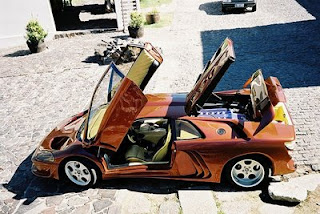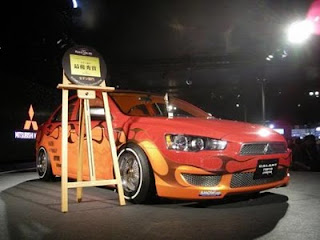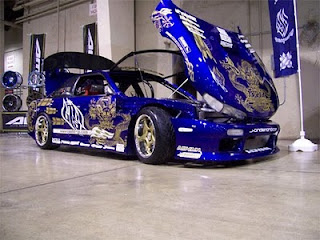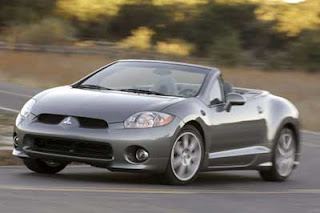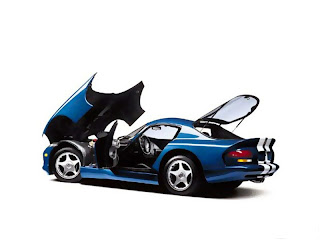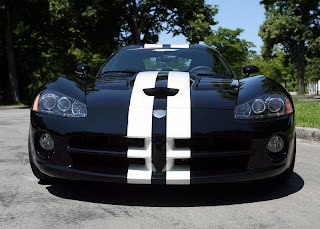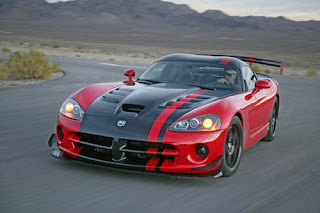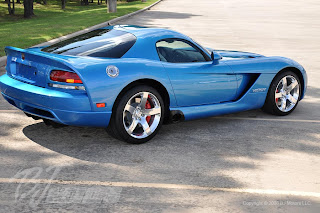The CCX was first unveiled on February 28, 2006 at the 2006 Geneva Motor Show although its existence was announced earlier. A derivative known as the CCXR is available, the main difference being that CCXR's engine is tuned to run on biofuel. The different fuel and tune allows the CCXR to produce 25% more power than the CCX. CCX is an abbreviation for Competition Coupé X; the X commemorating the 10th anniversary (being the Roman numeral for ten) of the completion and test drive of the first CC vehicle in 1996. The CCX is 1.6 in (41 mm) taller than the CCR and, combined with the carbon fiber reinforced plastic sports seats by Sparco, the CCX allows for 2 in (51 mm) of extra headroom that Autoweek reviewer Mark Vaughn hypothesizes is "to accommodate U.S. NBA stars." The electronic control unit has also received an upgrade over the CCR meaning that the CCX is without physical fuses and it is lighter than the previous system.
Engine
Previous Koenigsegg models were powered by Ford Modular V8 engines sourced from the U.S. Though also based on the Ford Modular architecture the engine of the CCX was thoroughly re-engineered by Koenigsegg themselves and is assembled at the Koenigsegg factory. The engine block for the dual overhead camshaft, 4 valve per cylinder 4.7 liter 288 cu in (4,719 cc) V8 is cast for them by Grainger & Worrall, a British company that produces drivetrain components for Formula One cars. The engine block is made of 356 Aluminium that has undergone a T7 heat treatment, a form of accelerated precipitation strengthening. The aluminium alloy is stronger than the previous engine and allows a thinner, thus lighter, engine block that will withstand higher cylinder pressures. The engine is boosted by two centrifugal superchargers that provide 17.5 psi (1.2 bar) of boost with an 8.2:1 compression ratio. The engine produces 806 bhp (601 kW; 817 PS) at 6900 rpm and 678 lb·ft (919 N·m) of torque at 5700 rpm on 91 octane (U.S. rating) gasoline. The engine is lubricated with a dry sump system with a separate oil pump, the pistons are cooled by oil sprayed onto them and the oil itself has an external cooler. The CCX does 14 mpg (17 l/100 km) in combined cycle and 18 mpg (13 l/100 km) in highway travel.
Performance
The CCX can accelerate from 0–62 mph (100 km/h) in 3.2 seconds and from 0–124 mph (200 km/h) in 9.8 seconds. According to Koenigsegg it has a top speed of approximately 250 mph (400 km/h), although this has not been officially verified. On 15 June 2008, a standard fully equipped CCX was independently timed by sport auto in achieving a record 0-186-0 mph (0-300–0 km/h) in 29.2 seconds, beating the Mercedes-Benz McLaren SLR 722 Edition, the Lamborghini Murciélago LP640, the Porsche 997 GT2, the Alpina B6 S (based on the BMW 6 Series), and the Corvette Z06.
Selasa, 30 Agustus 2011
Senin, 29 Agustus 2011
Koenigsegg CCR
The CCR is based on the Koenigsegg CC8S, featuring more power and higher performance. The improved-power engine was made possible by the use of a Lysholm twin-screw supercharger and a new titanium exhaust system. This takes the power output to a maximum of 806 hp (601 kW) at 6,900 rpm. Torque is also distributed evenly and peaks at 920 N·m (678 ft·lbf) at 5,700 rpm. Newer versions (the Koenigsegg CCX) appear to use twin Rotrex centrifugal type superchargers instead, providing the same power, but lowering the peak torque point from 5,700 to 5,400 rpm. (Note: This information of performance is partially updated in their official page.)
Externally the CCR looks similar to the CC8S, but features a new side air-intake design, a tweaked headlight arrangement, a revised rear-end, larger brakes, more power and new front splitters for optimized downforce. Like the CC8S, the CCR is a two-seat coupe with a mid-engine, featuring large scissor doors that open by rotating up and forward.
To honour the Swedish Fighter Jet Squadron No. 1, (Johan röd) which had occupied the current facility of Koenigsegg, the CCR is adorned with a symbol of a ghost, the symbol of the squadron.
On a History Channel special on the CCR (Aug, 2006), Koenigsegg states that the base price for the CCR is approximately US$590,000.
On February 28, 2005, at 12.08 local time, the Koenigsegg CCR broke the production road car speed record, achieving a new official top speed of 387.87 km/h (241 mph) at Italy's Nardo Prototipo proving ground. A team of five Koenigsegg engineers and mechanics together with founder Christian von Koenigsegg ran a technically standard CCR, driven by famous supercar test driver and veteran record breaker Loris Bicocchi. The car was clocked using Tag Heuer´s Splitmaster 650 with photocells stationary at the track, recording the average speed during 1 km.
The CCR took the record from the McLaren F1, which held the record for over 10 years of 386.7 km/h, set on the 9 km straight track at the VW Ehra facility in Wolfsburg, Germany. The CCR ran on the Nardo/Prototipo track, a circular track with a circumference of 12.5 km. This means that the car is driven in a constant turning motion, which makes the exercise and speed even more impressive. The steering wheel at this speed is kept at around 30 degrees of constant angle, a fairly sharp angle for the speed. On the same track, the F1 managed an unofficial record of 372 km/h.
In May, 2005 not long after the CCR claimed the record, a prototype of long awaited Bugatti Veyron took the crown with a top speed over 400 km/h (249 mph). The final production model of the Veyron reached a speed of 407.5 km/h (253.2 mph) in the hands of Car and Driver in their November 2005 issue.
BMW i3
?The BMW i3 is a well-resolved all-round concept, with every detail conceived and optimised to fulfil its eventual purpose. Central to its design is the innovative LifeDrive architecture, the key to the BMW i3 Concept's appeal as a light, safe and spacious car. Innovative use of materials and intelligent lightweight design not only enable the i3 Concept to travel long distances on a single charge and provide superb safety in the event of a collision, they also help give the car its excellent driving dynamics. The secure arrangement of the battery in the Drive module gives the vehicle a very low centre of gravity and optimum weight distribution. The electric motor over the rear axle - which generates output of 125 kW/170 hp and impressive torque of 250 Nm (184 lb-ft) from a standstill - and a small turning circle combine to deliver pleasingly crisp driving characteristics and give the driver a very immediate experience of the BMW i3 Concept's lightweight design. The BMW i3 Concept accelerates from 0 to 60 km/h (37 mph) in under four seconds and from rest to 100 km/h (62 mph) in less than eight seconds. The extremely direct sensation at the wheel is expressed in outstanding agility at low speeds and during turning manoeuvres, and makes parking in tricky situations that much easier.
The electric motor developed by BMW and the optimised lightweight design of the LifeDrive architecture cannot take all the credit for imbuing the car with such efficiency and enabling it to travel such long distances on each charge. Indeed, the ability of the car to recoup energy while on the move and special range-extending functions, such as ECO PRO mode, also add miles to the clock. With ECO PRO mode activated, all the vehicle functions operate with maximum efficiency. For example, the accelerator mapping is tweaked to limit the output summoned when the driver flexes his right foot, and the climate control functions also use as little energy as possible. Added to which, sophisticated aerodynamics and slim, low rolling resistance wheels minimise resistance to the car's forward progress and maximise its range.
Minggu, 28 Agustus 2011
BMW i8
BMW Vision EfficientDynamics and now use the official name of the i8 will reportedly be a car in the blockbuster movie Mission Impossible: The Ghost Protocol. BMW i8 is a hybrid car with a combination of 3-cylinder diesel engine, turbocharger, plus an electric motor which is claimed to produce 328 PS power. Another greatness of this car is able to sprint from 0-100 km / h in 5 seconds and reaches a top speed of 248 km / h (in Germany, a top speed of cars is limited to 240 km / h).
No less interesting, with an increasingly expensive oil prices, fuel consumption of this supercar 26.57 km per liter!BMW i8 go on sale in 2013. Although prices have not been announced, media reports estimate that this car will be sold at 160,000 U.S. dollars, or USD 1.5 billion in the United States.
Later, in the new film Mission Impossible, i8 will be accelerated by Chief John Anderton, who had also been using the BMW in the 2002 science fiction film, Minority Report. Coincidentally, John Anderton and previous Mission Impossible hero, Ethan Hunt, played by the same person, namely Tom Cruise. For BMW, it's an interesting promotion for the latest products being marketed in 2013.
Sabtu, 27 Agustus 2011
The Lamborghini Gallardo LP 560-4 Spyder Performante
The Lamborghini Gallardo LP 560-4 Spyder is already at the peak of its game, bearing testament to the lightweight engineering approach pursued by the Lamborghini brand. Nevertheless, the engineers in Sant'Agata Bolognese managed to reduce the weight of the new Spyder Performante by a further 65 kilograms (143 lbs). The open super sports car tips the scales with a dry weight of no more than 1.485 kilograms (3.274 lbs) - a new best for that highly exclusive market segment occupied by Lamborghini. Just like its "brother", the Gallardo LP 570-4 Superleggera, the light weight of the Spyder Performante is due in large part to exterior and interior components made from carbon-fiber. These carbon-composite materials are perfectly suited to super sports cars because they combine reduced weight with improved technical characteristics.
Performance is optimized as a result of lower weight, while CO2 emissions are reduced. Lamborghini has been leading the industry for 30 years in the application of CFRP, and now the brand is expanding that lead even further. The V10 power unit with a displacement of 5.2 liters generates 419 kW (570 hp) in the Spyder Performante and guarantees breathtaking performance - it catapults the open-top LP 570-4 from 0 to 100 km/h (0-62 mph) in a mere 3.9 seconds and keeps on going to a top speed of 324 km/h (201 mph). The engine with "Iniezione Diretta Stratificata" gasoline direct injection boasts extremely impressive pulling power and a virtually endless rev range that delivers a constant supply of spine-tingling acoustics.
The Lamborghini Gallardo LP 570-4 Spyder Performante is an uncompromising driving machine. Its chassis, with its mighty brakes, is a work of great precision, while the new 19-inch wheels with Pirelli P Zero Corsa sports tires are extremely lightweight. The LP 570-4 Performante brings a new meaning to the term "Spyder".
Jumat, 26 Agustus 2011
Lamborghini Gallardo LP570-4 Blancpain
Lamborghini Gallardo LP570-4 Blancpain is extraordinary super sports car joins the competition spirit of the Super Trofeo racecar with an exclusive design and one hundred percent road-going usability. The first Gallardo from the exclusive and limited Blancpain Edition production run has been presented by Stephan Winkelmann, President and CEO of Automobili Lamborghini, and Marc A. Hayek, President and CEO of Blancpain, at the final race weekend of the Lamborghini Blancpain Super Trofeo on Sunday September 26, 2010 in the "Piero Taruffi" circuit, Vallelunga.
Automobili Lamborghini, the manufacturer of extreme Italian super sports cars, and Blancpain, the world's oldest luxury watchmaker,are among the very best brands in their respective sectors worldwide. Blancpain was recently voted the "Best of the Best" among the world's most exquisite watch brands by the "Luxury Institute" in New York. Now the two brands have come together to develop a unique blend of technology and design to create the Lamborghini Gallardo LP570-4 Blancpain Edition, putting the power of the world's fastest mono-marque race series into a road-legal vehicle.
The Lamborghini Gallardo LP570-4 Blancpain Edition shows the spirit of competition - the mighty rear spoiler for maximum stability and the engine cover for optimized ventilation were derived directly from the race car featured in the world's fastest one-make series. The Edition is also equipped with Skorpius wheels with yellow-painted brake calipers and discs made, of course, from carbon-ceramic composite. One striking visual feature that fits perfectly with the matt black paintwork is the carbon-fiber used to make external components, such as the diffuser and mirror casings.
The interior of the Blancpain Edition further reinforces the extremely sporty character of the Gallardo without sacrificing the comfort of the driver and passenger. The entire interior is finished in black Alcantara with yellow accents and visible carbon-fiber. The Blancpain logo is placed on the exterior and also featured on the seats and cockpit in yellow stitching. Propulsion for the Lamborghini Gallardo LP570-4 Blancpain Edition comes courtesy of the 570 hp V10 power unit from the series Superleggera production car - as is the case for the Super Trofeo race car. Superb traction from the all-wheel drive ensures perfect stability in every situation.
The super sports car from Sant'Agata Bolognese boasts a dry weight of no more than 1340 kilograms (2954 lb) - the lightest road-going model in Lamborghini's range. One key factor is the exterior and interior components made from carbon-fiber. Carbon-fiber is ideal for the manufacture of sports cars as its use allows for weight reduction and improved mechanical features. The car's performance is thus enhanced thanks to a better power-to-weight ratio and reduced total mass, which means that CO2 emissions are also lower.
The V10 power unit with 5.2 liters (317.6 cu in) of displacement generates 419 kW (570 hp) in the Lamborghini Gallardo LP570-4 Blancpain Edition. This puts the power-to-weight ratio of the vehicle at only 2.35 kilograms (5.18 lb) per hp and guarantees breathtaking performance. This super sports car handles the dash from zero to 100 km/h (0-62 mph) in 3.4 seconds and flies past the 200 km/h (124 mph) mark only 6.8 seconds later, ultimately exceeding 320 km/h (199 mph).
Kamis, 25 Agustus 2011
Lamborghini Gallardo LP560-4 Bicolore
Automobili Lamborghini has presented at the 2011 Qatar Motor Show a highly exclusive and appealing vehicle making its world premiere: the Lamborghini Gallardo LP560-4 Bicolore, a Special Edition supersports car which will be produced for the European and Asian-Pacific markets, while for the American market it will be only available in the version LP550-2. As its name implies, this special series features an exclusive wo-tone finish with matching interior, and offers a full range of standard equipment. A refined contrast between the black roof and the color of the rest of the body (available in a choice of five shades) further emphasizes the sharp, dynamic lines of the Gallardo LP560-4, while simultaneously enhancing its sportiness and adding a touch of elegance to an extremely prestigious model in the field of automotive design.
The most successful super sports car in Lamborghini's history captures the imagination with the brutal power of its 560 hp V10 engine, the absolute grip of its permanent all-wheel drive and the razor-sharp precision of its chassis. Every kilometer in the Lamborghini Gallardo is an intense experience of explosive dynamics and absolute control. Its breathtaking performance is indicated by the 3.7 seconds it takes to reach 100 km/h and its top speed of 325 km/h.
With its new Bicolore model, Lamborghini is now setting a further design highlight in the ten-cylinder model series. The colored exterior finish matched with the black on the upper area of the body gives the Gallardo a new, more aggressive personality that looks even wider, even more extreme and innately adhered to the road.From the window-line upwards (including pillars, roof, engine hood and rear spoiler), the vehicle is decorated in Noctis Black - a pastel black that contrasts perfectly with the lower area of the body, available in a choice of five colors: Giallo Midas, Arancio Borealis, Grigio Telesto, Bianco Monocerus and Blu Caelum.
The exterior appearance is enhanced by Skorpius aluminum-alloy rims with 15 thin spokes that are forged to minimize unsprung weight and are finished in titanium gray enamel. And, the air intakes and front spoiler have a high-gloss black finish, as does the upper section of the rear diffuser.
The Lamborghini Gallardo LP560-4 Bicolore completes Lamborghini's ten-cylinder model range, which is enjoying enormous resonance worldwide with its broad spectrum of individual characters. While the Gallardo LP560-4 is already a highly trained, extreme athlete, the Gallardo LP570-4 Superleggera takes the notion of thoroughbred high performance even further. Thanks to its extensive experience in carbon-fiber lightweight engineering, Lamborghini succeeded in reducing its weight by a further 70 kilograms. At 2.35 kilograms per hp, the power-to-weight ratio of the Superleggera is the best in its class, with breathtaking performance guaranteed.
The Gallardo LP560-4 Spyder, on the other hand, offers a very different kind of extreme driving pleasure - every trip with the roof down is a journey with a hurricane, yet with maximum protection. This can only be bettered - in true Lamborghini style - by the Gallardo LP570-4 Spyder Performante. Its purist carbon-fiber lightweight engineering, according to Lamborghini's tradition, adds an even sharper edge to the dynamics.
Langganan:
Postingan (Atom)




































